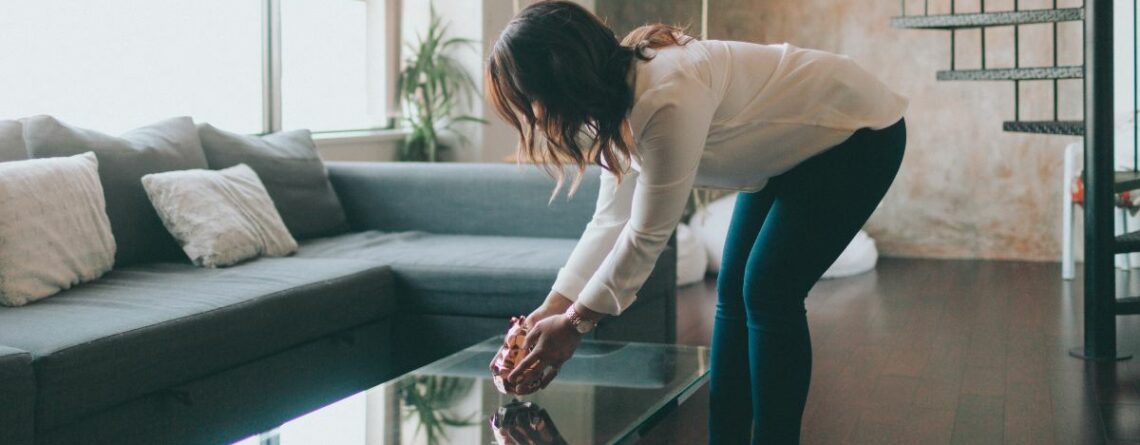Home Staging Tips
Home staging is more than just a trendy buzzword; it’s a strategic approach to presenting your property in the best possible light. The real estate market is often highly competitive, and homebuyers are swayed not just by specifications like square footage or the number of bedrooms but also by their emotional reaction when they first walk into a home. Think of it like setting the stage in a theater; you want the audience to be captivated by the first scene. Staging amplifies the home’s strong points while minimizing weaknesses, often resulting in quicker sales and potentially higher offers.
What This Guide Covers
Navigating the numerous tips and suggestions for home staging can be overwhelming. This guide simplifies the process by focusing on seven key areas, each designed to appeal to potential buyers’ senses and emotions. From decluttering spaces and choosing neutral colors to maximizing natural light and updating curb appeal, the advice provided aims to be practical and impactful. Whether you’re a first-time seller or a seasoned homeowner, these tips offer a structured approach to preparing your home for the market, increasing its attractiveness and, potentially, value.
Tip 1: Declutter the Space

Next, the organization of furniture and clearing of surfaces also play significant roles in decluttering. Overstuffed rooms with bulky furniture can make even spacious areas feel cramped. Streamlining furniture arrangements can create a flow that is both functional and pleasing to the eye. Similarly, clear countertops and tables contribute to a more open, clean feel. These elements combined make for a more visually appealing and inviting environment, which can go a long way in impressing potential buyers.
Tip 2: Use Neutral Colors
The color palette of a home can have a dramatic impact on how potential buyers perceive it. Opting for neutral colors on the walls provides a blank canvas that appeals to a broader audience. It allows people to focus on the features of the space rather than being distracted or potentially put off by bold or personalized colors. The choice of paint can be especially influential in areas like the living room or kitchen, where people spend a lot of time. Neutral walls make it easier for buyers to imagine adding their own splash of color through artwork or furnishings.
Similarly, updating decor and choosing neutral furniture can complement the neutral walls and contribute to a cohesive, sophisticated look. When furniture and decor elements are neutral, they add to the inviting atmosphere without overpowering the space. It also offers versatility; potential buyers can easily see how their belongings would fit into the home. Combining neutral walls, updated decor, and appropriately chosen furniture creates a harmonious environment that appeals to various tastes, increasing the likelihood of a quick sale.
Tip 3: Maximize Natural Light

Another aspect that’s often overlooked is the cleanliness of the windows themselves. Dirty or grimy windows can significantly reduce the light that filters through, creating a dull and less appealing atmosphere. A thorough cleaning can have an immediate impact on the overall luminosity of the room. Additionally, placing mirrors strategically across from windows can amplify the natural light. Mirrors reflect both light and the view from the window, creating an optical illusion of more space and brightness. These three steps—opening window treatments, cleaning windows, and adding mirrors—work together to create an environment filled with natural light, which is often high on the list of priorities for potential buyers.
Tip 4: Style the Bathroom
The bathroom is more than just a functional space; it’s often viewed as a sanctuary where people unwind after a long day. Therefore, cleanliness is paramount. A spotless bathroom immediately communicates care and maintenance, increasing a buyer’s confidence in the overall state of the home. Every corner should be sanitized, from the tiles and fixtures to the toilet and sink. Sparkling surfaces are non-negotiable when it comes to making a good impression.
Adding spa-like accessories elevates the bathroom from a functional space to a luxurious retreat. Think plush towels neatly rolled or stacked, elegant soap dispensers, and perhaps a few tastefully chosen decorative elements like candles or plants. These accessories lend a touch of opulence without overwhelming the space. To round out the bathroom staging, it’s wise to stick with a simple and neutral theme, in line with the general home staging tip of neutrality. Soft, light hues or classic white can make the bathroom appear more spacious and inviting, and they also serve as an ideal backdrop against which the potential buyers can envision adding their own personal touches. Together, these elements help transform the bathroom into a compelling home selling point.
Tip 5: Update Curb Appeal

In addition to landscaping, small updates like painting the front door can have a considerable impact. A freshly painted door not only revitalizes the facade but also offers a hint of the care and attention given to the rest of the home. Add potted plants or flowers near the entrance to enhance curb appeal further. They not only bring life and color but also create a welcoming ambiance. These seemingly minor details collectively contribute to a favorable first impression, encouraging potential buyers to explore the home positively. By focusing on these three core elements—landscaping, the front door, and potted plants—you set the stage for the rest of the home viewing experience.
Tip 6: Depersonalize but Don’t Sterilize
Depersonalizing a home walks a fine line between making it universally appealing and running the risk of rendering it too sterile or lifeless. Removing family photos is a standard practice in home staging because personalized images can prevent buyers from visualizing themselves in the space. While family photos make a home feel loved and lived-in, they can also be a subconscious reminder that it currently belongs to someone else. Removing these will pave the way for potential buyers to move in with their belongings mentally.
However, depersonalization should not extend to stripping the home of all characters. While you should aim for neutral and universally appealing decor, it’s also important to maintain a cozy and inviting atmosphere. This is where general artwork and decor come into play. Pieces that are aesthetically pleasing but not overly personalized can add charm and character without alienating potential buyers. Consider landscapes, abstract art, or subtle geometric patterns as artwork choices. A cozy atmosphere can also be achieved through soft furnishings like neutral throw blankets, tasteful rugs, or decorative pillows. The idea is to keep the home from feeling like an empty shell while making it a blank canvas for buyers’ imaginations.
Tip 7: Get Professional Photos

Before the photographer arrives, ensure the home is perfectly staged. The effort you’ve put into decluttering, painting, and styling should be evident in the photos. It is advisable to walk through the property and scrutinize every detail to ensure it aligns with the staged aesthetic you want to convey. After the photos are taken, review them critically for quality and impact. Ensure that they represent the property accurately and in its most flattering light. If something looks off or doesn’t convey the home’s appeal, it’s worth discussing reshoots or edits with the photographer. Good photography is an embellishment and a powerful selling tool that can make your home stand out in crowded online listings.
Importance of Staging
The art of home staging is a nuanced process that goes beyond mere aesthetic appeal; it’s a strategic effort to highlight a property’s strengths while minimizing its flaws, thereby accelerating the sales process and potentially increasing the selling price. From decluttering and neutral color schemes to enhancing natural light and curb appeal, each tip aims to create an environment that speaks to a broad range of buyers. The goal is to facilitate the mental move-in for potential buyers, helping them visualize a house and a home where they can build their lives. So, whether you’re a first-time seller or a seasoned homeowner, well-executed staging can be a valuable asset in your real estate toolkit.












LEAVE A COMMENT